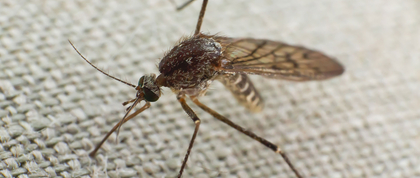
Guest Columnist: Dr. Yesim Tozan
Assistant Professor of Global Health
A new CBS News documentary, Zika: Children of the Outbreak, was broadcast last week, reminding us of the disease’s devastating consequences.
Between 2015 and 2016, thousands of babies whose mothers were infected with Zika during pregnancy were born with severe birth defects and a range of disabilities. Recife, Brazil was ground zero. There, Zika spread explosively in densely populated neighborhoods whose poor living conditions were a perfect breeding ground for the mosquitoes that spread the disease. Then, as mysteriously as it arrived, the outbreak mostly subsided — from over 20,000 cases a week to just a few hundred.
Three years after Zika virus first made headlines, doctors have learned a great deal about the disease. But while some of Zika's mysteries have been solved, other questions linger. Novel interventions are still badly needed to help prevent Zika, as well as dengue and chikungunya outbreaks.
To that end, I was in Tapachula, Mexico, last week to participate in a working group on sterile insect techniques (SIT) hosted by the World Health Organization, the Special Programme for Research and Training in Tropical Diseases, and the International Atomic Energy Agency. The group is charged with developing technical guidance on the deployment and assessment of SIT as a component of integrated mosquito control strategies for disease prevention.
During the meeting, I visited the intervention area and saw the release of over 100,000 sterile male Aedes aegypti mosquitoes into the wild, a weekly exercise conducted throughout the year as part of a pilot project in Tapachula. I also visited households participating in the intervention.
These Aedes aegypti mosquitoes are mass-reared in the lab and sterilized as pupae by exposure to ionizing radiation. The aim is to suppress local Aedes populations that carry diseases like dengue by having sterile male mosquitoes mate with females in the wild. The eggs produced as a result will fail to hatch.
In the video below, a batch of 60,000 sterile mosquitoes is loaded into the drone to aerially disperse them over the project area.
The Zika epidemic was the first time in history that a virus transmitted by a mosquito bite has been found to cause congenital birth defects. (CBSN). As there is no cure for microcephaly, affected babies may face lifelong health problems. But efforts toward preventing mosquito-borne illnesses will continue to make progress with this important work.